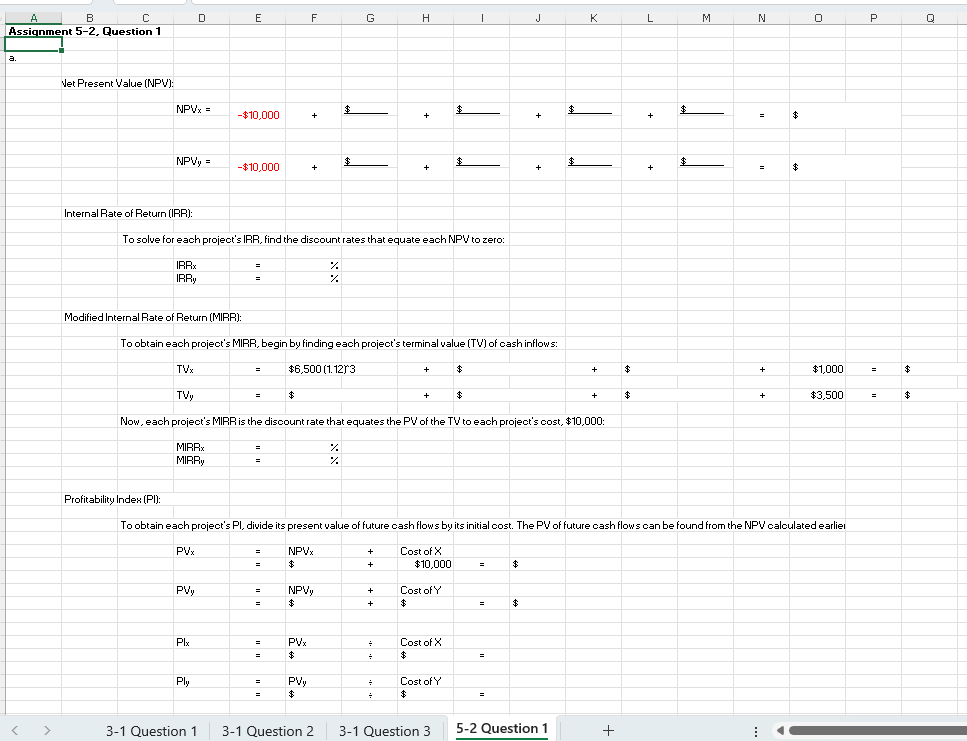Expected Net Cash Flows Year Project X Project Y 0 – $10,000 – $10,000 1 6,500 3,500 2 3,000 3,500 3 3,000 3,500 4 1,000 3,500 Use the Workbook to calculate each project's net present value (NPV), internal rate of return (IRR), modified internal rate of return (MIRR), and profitability index (PI). Which project or projects should be accepted if they are independent? Which project or projects should be acce
This homework submission should include all calculations for part (a), completed on the designated tab of the Homework Student Workbook, and a document explaining the implications of your findings for the business or business transaction. After reading this week’s resources, respond to the following:
You are a financial analyst for the Brittle Company. The director of capital budgeting has asked you to analyze two proposed capital investments: Projects X and Y. Each project has a cost of $10,000, and the cost of capital for each is 12%. The projects' expected net cash flows are shown in the table below.
Expected Net Cash Flows
|
Year |
Project X |
Project Y |
|---|---|---|
|
0 |
– $10,000 |
– $10,000 |
|
1 |
6,500 |
3,500 |
|
2 |
3,000 |
3,500 |
|
3 |
3,000 |
3,500 |
|
4 |
1,000 |
3,500 |
- Use the Workbook to calculate each project's
net present value (NPV),internal rate of return (IRR), modified internal rate of return (MIRR), and profitability index (PI). - Which project or projects should be accepted if they are independent?
- Which project or projects should be accepted if they are mutually exclusive?

Trending now
This is a popular solution!
Step by step
Solved in 3 steps with 3 images


